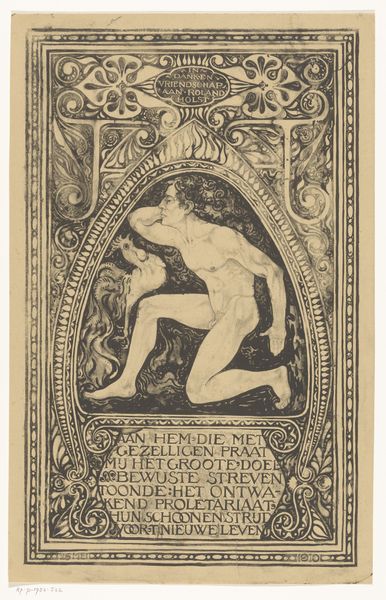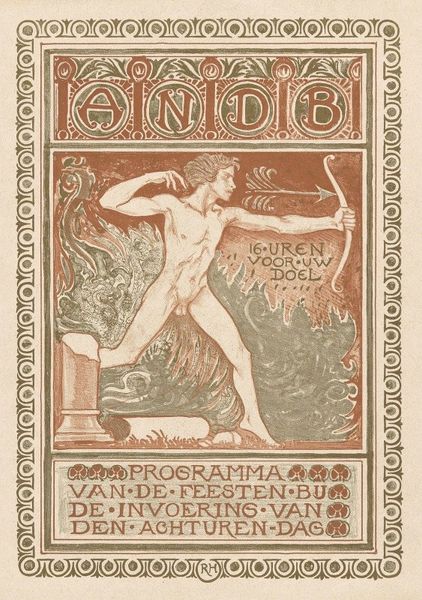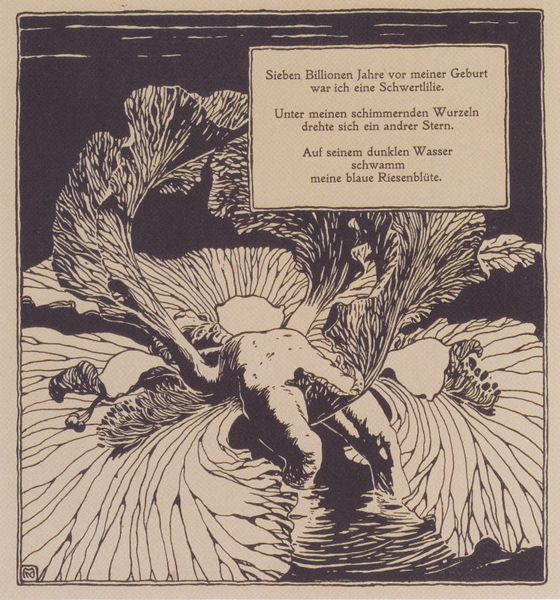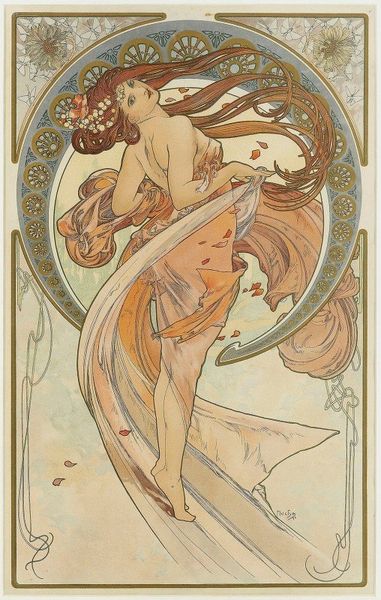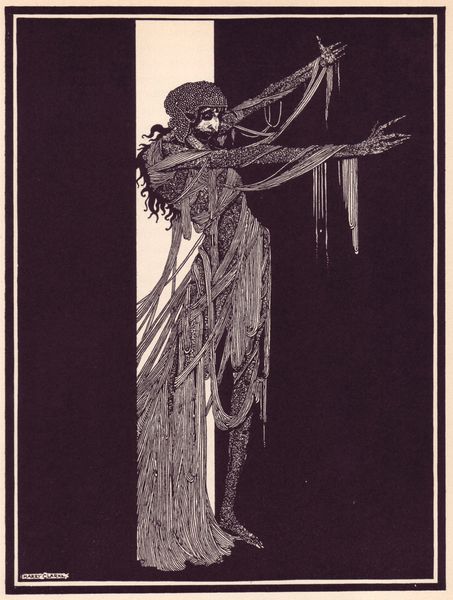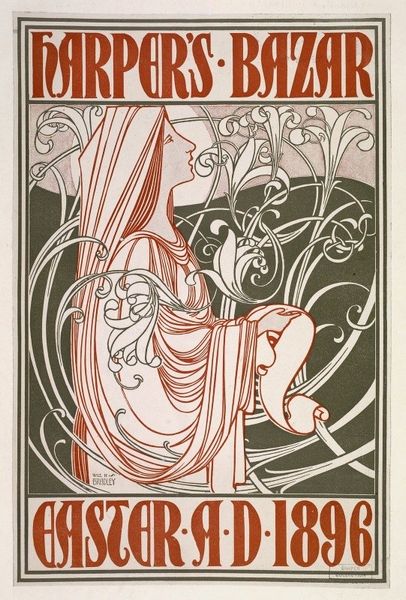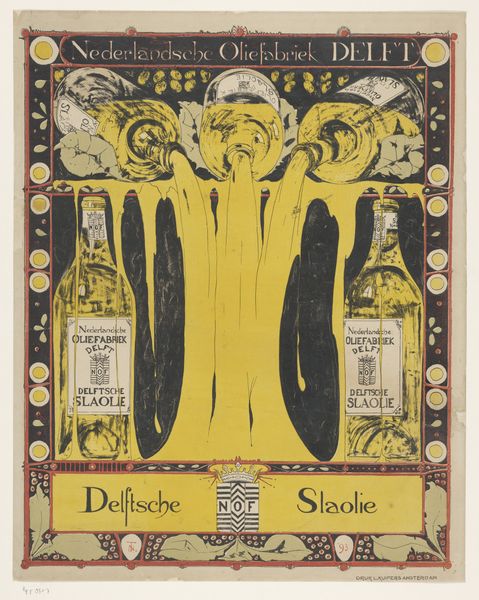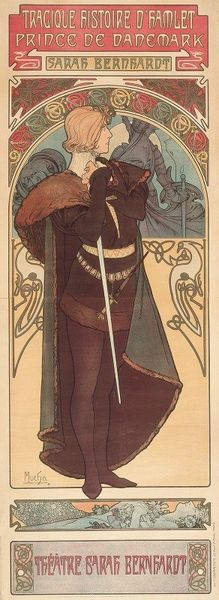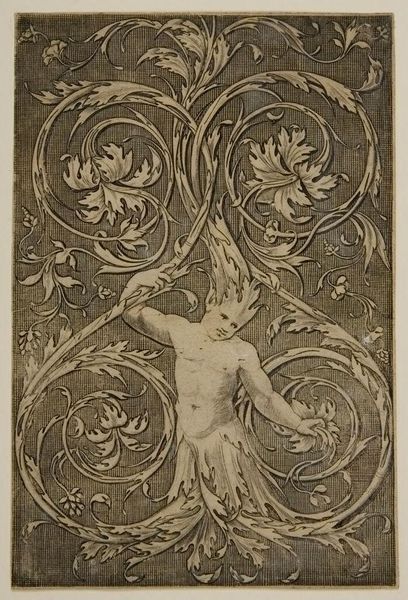
Lucifer Treurspel van Vondel. N.V.Het Tooneel dir; Willem Royaards, Muziek van Hubert Cuypers, Ontwerp Decor en Costumes van R N Roland_ 1910
0:00
0:00
drawing, graphic-art, carving, print, woodcut, poster
#
drawing
#
graphic-art
#
art-nouveau
#
carving
# print
#
carving
#
woodcut effect
#
landscape
#
figuration
#
woodcut
#
symbolism
#
poster
Copyright: Public Domain: Artvee
Editor: This is a poster by Richard Nicolaüs Roland Holst from 1910, advertising "Lucifer Treurspel van Vondel." It looks like a woodcut, and it's quite striking. I'm particularly drawn to the figure in the center. There's a sense of burdened weight and despair emanating from it. How do you interpret this work within its historical context? Curator: Considering Holst's poster in 1910, we need to think about the socio-political climate and the revival of interest in older forms like woodcuts as authentic expressions of national identity. Note how the Art Nouveau style merges with Symbolist themes. Roland Holst was deeply engaged in socialist circles; how do you think that impacted his choice of subject matter and visual language for this theatrical production of Lucifer? Editor: Well, knowing about his socialist ties definitely shifts my perspective. Perhaps Lucifer isn't just a fallen angel here, but a symbol of rebellion against established powers, or maybe even a representation of the working class carrying the weight of oppression. The visual language does have a sense of that. Curator: Precisely. This poster would have served to communicate these complex ideas to a wide public. Consider how theater itself functions as a social space, particularly in a period of social upheaval. Also, the medium of the poster is integral, disseminating potentially radical ideas on a large scale in urban environments. What can you tell me about the significance of staging *Lucifer* itself? Editor: I hadn't really considered the choice of play itself as a statement. Staging Vondel's "Lucifer," with its themes of pride and rebellion, at that moment definitely adds another layer to its potential interpretation. The play combined with Holst’s visuals must have really resonated with audiences interested in those socialist ideals. Curator: Exactly. By understanding the context – the politics of theater, artistic revivals, and the artist's social engagements - we gain a far richer understanding of what this image communicated to its original audience. Editor: I see how focusing on historical context makes this artwork come alive and speaks of potent cultural dialogues in that time period. Thank you.
Comments
No comments
Be the first to comment and join the conversation on the ultimate creative platform.
